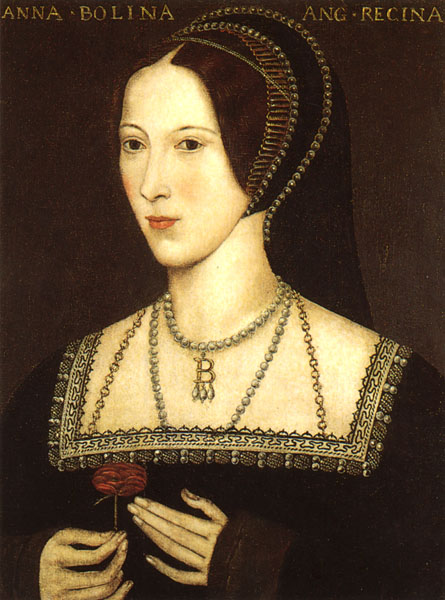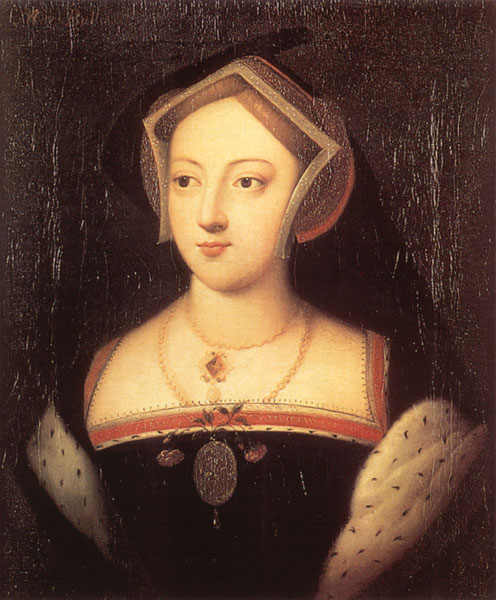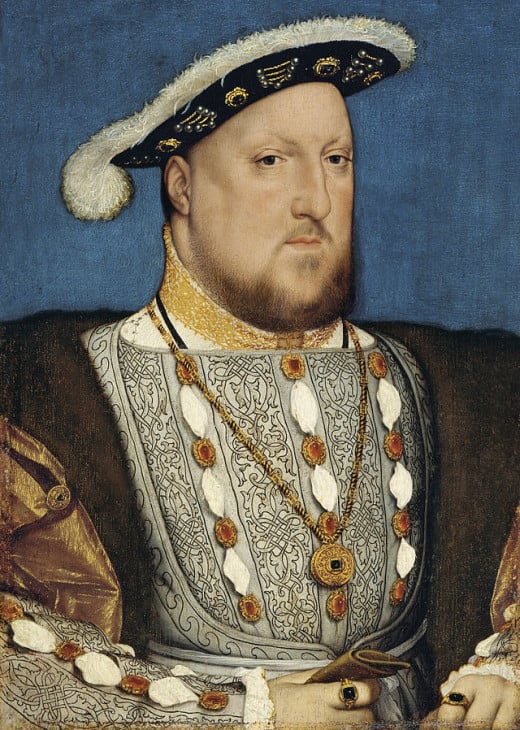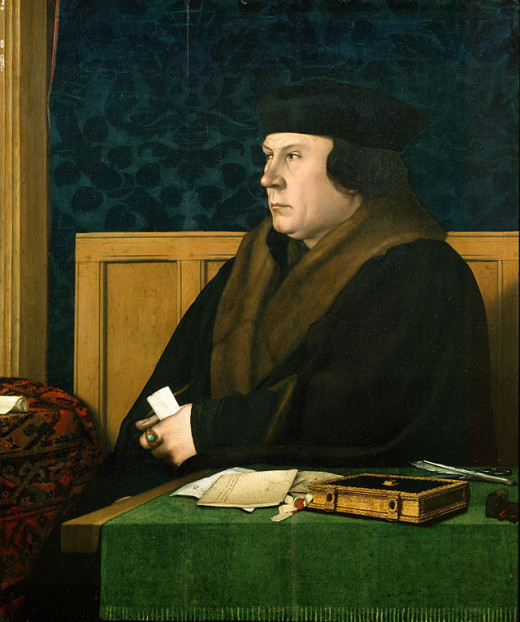- HubPages»
- Education and Science»
- History & Archaeology»
- History of Europe
Anne of the Thousand Days

Anne Boleyn
given title Marquess of Pembroke by Henry VIII
Coronation: June 1, 1533
Queen of England 1533 - 1536
Second wife of Henry VIII
Children: Elizabeth I of England
Executed: May 19, 1536

Anne Boleyn c.1501 - 1536
Sparkling black eyes, luxurious long dark hair, witty, charming and seductive, Lady Anne Boleyn took the place of Queen Catherine of Aragon in Henry VIII's heart. Desperate for a male heir, Henry turned to Anne, who completely captivated him, to become the mother of his son and heir.
Devastated and angry that his wife, Queen Catherine, could not bear him a son, Henry shook up the Roman Catholic Church and finally had himself named the head of the Church of England so he could annul his marriage to Catherine and make Anne his queen.
However, Anne would have to wait seven years as Henry and Pope Clement VII negotiated back and forth about the annulment. When he realized that the Roman pope would never give him an annulment, Henry finally completely broke with Rome, named himself Supreme Head of the Church of England, and had a magnificent coronation that made Anne his queen.
Anne's birthday was not officially recorded, but it is believed she was born around 1501 at Blickling Hall in Norfolk. Her father was Sir Thomas Boleyn, a minor courtier and knight, and her mother was Elizabeth Howard, daughter of the second duke of Norfolk. Anne had two siblings, George and Mary.
She became one of the most famous wives of Henry VIII and one of the most famous queens in English history. However, she ruled as queen for just three years, approximately one thousand days.
Anne was a smart, aggressive woman who was no fool. She stirred passionate emotions in all who knew her. Courtiers either liked her or hated her; there was no in between with Anne.
Anne was not considered a great beauty, but it was her wit and grace that attracted the attention of Henry VIII, the king of England. Anne was sophisticated and knowledgeable about the ways of court life and knew how to manipulate a situation to get what she wanted - and she wanted to be queen.
Anne was witty, confident and assertive; not quiet, gentle or demure, the admired qualities of a 16th century woman. She was charming and a great conversationalist and she had a fiery temper she never learned to control.
At the age of twelve or thirteen Anne was sent to modern day Belgium to the court of Archduchess Margaret, Regent of the Netherlands. There she learned French and the skills needed for court life.
Two years later, she joined the court of Henry's sister, Mary, Queen of France. Anne became an accomplished musician, singer and dancer. Anne returned to England eight years later, so graceful she was hardy recognized as an English woman. She became a lady in waiting to Queen Catherine of Aragon in Henry's court.
Thus began, Anne's mercurial rise in the Tudor court.

Henry and Anne's love letters
Henry's letter to Anne: "If you . . . give yourself up heart, body and soul to me . . . I will take you for my only mistress, rejecting from thought, affections and others save yourself, to serve only you."
Anne's response: "Your wife I cannot be, both in respect of mine own unworthiness and also because you have a queen already. Your mistress I will not be."
Henry and Anne
Henry had originally been attracted to Anne's sister, Mary Boleyn, and she became the king's mistress in the early 1520's. As a favor to Thomas Boleyn, Henry elevated him to viscount Rochfort/Rochford in 1525.
By this time, Henry had tired of Mary and fixed his eye on Anne. Anne was popular with the young men in Henry's court for her wit and charm. She was also quick tempered and spirited and it was all these qualities that attracted Henry to her.
Anne, at this time, was seriously involved with Harry Percy and there were rumors at court that they were engaged and had made public declarations of true love to one another.
Henry ordered Cardinal Wolsey to put an end to Anne's match with Percy. Because of this, Cardinal Wolsey became Anne's enemy for life as Anne had truly been in love with Percy. Anne worked against Cardinal Wolsey and found an ally in Wolsey's ambitious protégé, Thomas Cromwell.
When Anne realized the depth of Henry's love for her, she refused to be his mistress and demanded to be Henry's queen. She had learned from her older sister, Mary, who had been just a mistress and discarded by Henry and left pregnant with his bastard child.
How Anne was able to capture and maintain the king's attention for such a long while despite all the obstacles and malicious gossip is remarkable. Many times Anne made herself unavailable to Henry which made him want her even more. However, one cannot separate the king's desire for a son from his personal desire for Anne. Henry was convinced Anne could and would bear him sons.
Anne's abrasive and argumentative nature made her unpopular at court and she offended many. She now was sustained only by the king's affection.
As the struggle for the annulment stretched over seven years, Anne's position and importance at court became steadily more prominent. The king would eat with her alone; she received expensive gifts from Henry; she dressed in the most fashionable and expensive gowns and Henry paid all her gambling debts.
Henry and Anne exchanged seventeen love letters which attested to Henry's passion for Anne. Today they are preserved in the Vatican library.
Anne took precedent over all other ladies and she sat with Henry at banquets and hunts while Catherine was ignored. However, the pretense of the first marriage continued with Catherine taking her place next to Henry at official court proceedings.
To keep Anne happy, Henry titled Anne, Marquess of Pembroke in 1532. Now Anne had wealth and lands of her own. This event is believed to have marked the physical consummation of Anne and Henry's relationship.
Anne and Henry were secretly married in January 1533 as it is believed Anne was pregnant at the time. Interestingly, Henry was still married to Catherine of Aragon, so this marriage was bigamy on Henry's party. It was not until later that Henry declared himself head of the Church of England. In June 1533, Anne and Henry had a public marriage ceremony, followed by the coronation of Anne as Queen of England on June 1, 1533.
Anne's coronation was a lavish affair, but the Tudor realm was not impressed with her. They still preferred Catherine who they felt was Henry's true and right queen. This was another reminder of Anne' dependency upon the king.
Queen Anne made every effort to play the traditional role of queen. She helped the poor, cared for her constituents, and sewed shirts for Henry, all activities an English queen was expected to do.
Anne also knew her status as Queen was contingent on her ability to bear Henry a son.
Anne supported the new Church of England even though she was a pious Roman Catholic as she had to support the Church of England so her children would be recognized as legitimate.
Once married, Anne Boleyn failed to become the obedient wife Henry expected of her and to ignore his infidelities as Catherine of Aragon had. Affairs Henry had set off wild fits of jealousy from Anne.
In September 1533, Anne gave birth to a daughter, Elizabeth, (who later became Elizabeth I of England) Both Henry and Anne were bitterly disappointed in a daughter, but Anne was still young and Henry had every reason to believe their would be sons in the future and so Henry continued his affection for Anne.
Despite the disappointment of a daughter, Henry declared Elizabeth his heir. After Elizabeth was christened, Henry wrote his daughter with Catherine, Mary, a letter demanding that she relinquish her titles, Princess of Wales and of England, because the title now belonged to his heiress, Elizabeth. Henry also demanded that Mary acknowledge the validity of his marriage to Anne and the legitimacy of her half-sister, Elizabeth.
Mary refused Henry's demands and angered Henry so much he evicted Mary from her home and moved her to Elizabeth's household to humiliate her. Mary still refused to acknowledge Elizabeth as the Princess of Wales and England.
Henry was infuriated with Mary and Anne encouraged the father/daughter estrangement because it elevated her daughter's status. Mary became a constant thorn to Anne and Henry.
Thomas Cromwell intervened and appealed to Mary to renounce her titles, but she still refused. Anne, herself, even tried to visit with Mary to convince her to renounce her titles, but Mary refused to meet with her and refused to recognize Anne as queen.
These events led to the life-long hatred Mary had toward her half-sister, Elizabeth.
In April 1534, Anne announced she was again pregnant but by September 1534 she miscarried a boy. Again, Henry and Anne were bitterly disappointed. After this, Henry strayed and this caused Anne great anxiety.
November 1534, the Treason Act was a passed. It was now a capital crime to deny the legitimacy of Anne's marriage and her children.
However, during the two and a half years after Elizabeth's birth, Anne rarely felt secure, certain of her position, or of the king's affections. In court, Anne was surrounded by fair-weather friends who at the slightest sign of Henry's disfavor ignored Anne.
A year into their marriage, Henry pursued and engaged in sexual relationships with two of Anne's ladies in waiting: Madge Shelton and Jane Seymour. Anne was enraged by Henry's promiscuity and became increasingly jealous. Henry justified his behavior as his mission to have a son and heir to the throne.
Henry was openly flirting with other women causing Anne even more anxiety. Resentment and hostility was felt on the part of both Henry and Anne and the marriage quickly fell apart.
In 1536, Anne gave birth to a stillborn male child. Now, Henry was convinced she could not bear him sons and confided in Thomas Cromwell, his adviser that "he had made this marriage seduced by her (Anne's) witchcraft."
Thus began Anne's downfall.

The end of Anne
Anne's fall and destruction was swift and unbelievable even to those in Henry's court. Henry was always one to plot against people while he pretended affection. Anne was no different. Anne suffered the same fate as Catherine: Henry was dissatisfied with Anne, but he maintained their lifestyle together. All the while Henry was seeking the best way to destroy Anne.
Catherine died in January 1536, a few days before Anne's final miscarriage and these two incidents pushed Henry into action. If he could rid himself of Anne, he could take a third wife who would not have been tainted by bigamy and perhaps would be better received in his court.
Henry had tired of Anne's argumentative and aggressive personality and was now charmed by Jane Seymour. Jane was everything Anne was not: she was demur, docile and discreet and this is what Henry craved at the moment. He now believed Jane could give him a son. (and she did, Edward VI)
Henry, through Thomas Cromwell, had Anne arrested and falsely charged with adultery, witchcraft, incest and treason
Anne's sister in law, Jane Rochford, testified to Anne's incestuous love affair with her brother, George. She had always been jealous of Anne's closeness to her husband and this was a way to get back at them both. Henry wanted Anne convicted and killed and her bother George would also be killed. Anne was tried by her peers and no member of the nobility would help her.
Thomas Cromwell, in the beginning Anne's champion, now did Henry's bidding to get rid of her. April 24, 1536, Henry secretly signed a commission giving orders to Cromwell and the duke of Norfolk, Anne's uncle, to investigate Anne for treason. Cromwell got her maids to testify against Anne. She was charged with conspiracy to murder King Henry. She was accused and convicted of adultery with four men: Mark Smeaton, Sir Henry Norris, Sir Francis Weston and William Bereton. All men were forced, by Cromwell, to admit to adultery with Anne.
Today, historians do not believe any of these charges against Anne held any merit and conclude they were concocted so Henry would have a reason to kill Anne.
Shortly before her execution on charges of adultery, Anne's marriage to Henry was dissolved and declared invalid. Her daughter, Elizabeth, was stripped of her title of princess and was declared a bastard. The question now is how could Anne have committed adultery against Henry if she had never been married to the king. Logic was not applied to the case against Anne.
Anne was executed on May 19, 1536, the first public execution of an English queen.
Anne's remains were taken to St. Peter ad Vincula, the church of the Tower of London and buried there where she would later be joined by her cousin, Catherine Howard, Henry's fifth wife, also executed by Henry.
Ten days after Anne's execution, Henry happily married Jane Seymour, Anne's lady in waiting.
Sources:
englishhistory.net/tudor/monarchs/anne-boleyn
www.pbs.org/wnet/sixwives/meet/ab_handbook_main.html
www.biography.com/people/anne-boleyn-9218155#early-life
"and if any person will meddle of my cause, I require them to judge the best."
— from Anne Boleyn's speech at her execution







